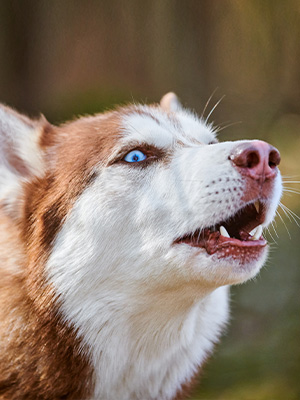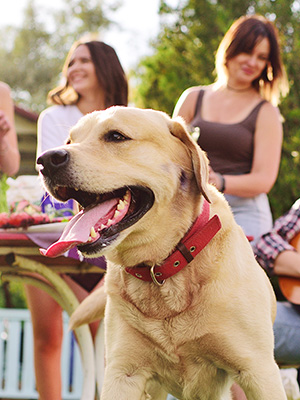As a dog owner, have you ever wondered what plants are toxic to dogs? We love our precious pups but do we know how to keep them safe in our own backyards?
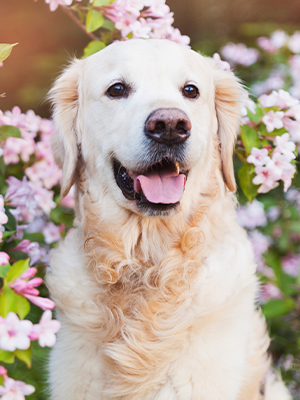
Our Blog
Our Blog

12/12/22
What Plants Are Toxic To Dogs?
As a dog owner, have you ever wondered what plants are toxic to dogs? We love our precious pups but do we know how to keep them safe in our own backyards? Unbeknownst to many, various plants are growing in our yards and walking paths that can be poisonous to dogs.
In this article, we will educate you about some of the most common toxic plants for dogs found in Australia. We’ll also help you identify the signs of poisoning in dogs. Depending on the type of exposure, there will be different dog poisoning treatments that your vet can perform. If you aren’t able to access a vet, we will share some helplines that can assist in an emergency.
Just because you have a dog, it doesn’t mean you can’t enjoy a bountiful garden. There are plenty of dog-safe plants that you can grow! We will give you the low down on the many dog-safe plants you can have in abundance.
Read on to get yourself informed about the dangers of certain plants that could cause harm to your pooch. By the end, you’ll be armed with the knowledge to keep your furry friends out of harm’s way!
Toxic Plants for Dogs
There are many plants found across Australia that are considered toxic to dogs. Below we’ve included a list of some of the most common ones to look out for, as well as the possible effects they can have on your dog:
- Kangaroo Paw: This tall native shrub has a distinctive paw-shaped flower. It contains toxic saponins, which can cause vomiting, diarrhea, and other digestive problems in dogs.
- Macadamia Nuts: These nuts are found in many Australian gardens and can cause weakness, tremors, and depression in dogs if ingested.
- Stinging Nettle: This plant has hairs on its leaves which can cause skin irritation and even anaphylactic shock if touched.
- Lantana: This flowering shrub is found in many Australian gardens and produces berries that can be toxic to dogs.
- Oleander: This ornamental shrub contains toxins that can cause vomiting, diarrhea, and even death if eaten.
- Euphorbia: This succulent contains a sap that can cause skin and eye irritation, as well as vomiting and diarrhea if ingested.
- Castor Bean: This plant contains a toxin that can cause diarrhea and vomiting in dogs.
- Cycads: This plant’s seeds can cause various neurological symptoms, including paralysis and seizures, if ingested.
- English Ivy: This climbing plant contains toxins that can cause drooling, vomiting, and other digestive issues in dogs.
- Bracken Fern: This fern contains toxins that can cause anemia and other blood disorders in dogs.
- Parsnip: This root vegetable contains toxins that can cause vomiting, diarrhea, and skin irritation in dogs.
- Australian Wattle: This flowering tree contains toxins that can cause tremors, seizures, and sometimes death in dogs.
- Foxglove: This flowering plant contains digitalis, a toxin that can cause vomiting, diarrhea, and other digestive issues in dogs.
- Yew: This evergreen tree contains toxins that can cause vomiting, diarrhea, and other digestive issues in dogs.
- Rhododendron: This flowering shrub contains toxins that can cause vomiting, diarrhea, and other digestive issues in dogs.
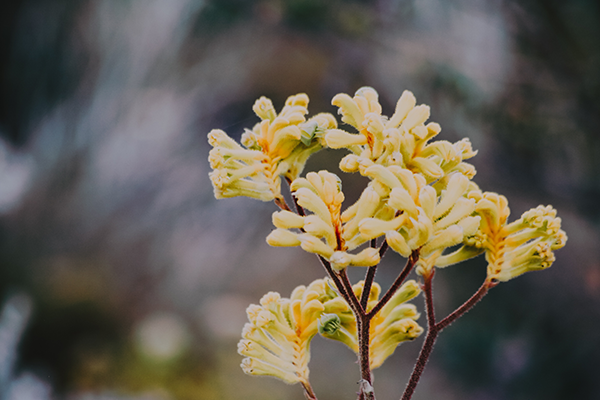
Kangaroo Paw is toxic for dogs.
Dog Poisoning Symptoms: Signs of Poisoning in Dogs
It’s most definitely a stressful time when your pup is unwell. Since they can’t communicate what’s wrong, it’s best to get familiar with the signs of dog poisoning. Be sure to closely monitor your dog when things seem off, and don’t hesitate to reach out to your vet if they show symptoms such as:
- Vomiting: One of the most common signs of dog poisoning is vomiting. Sometimes it may be accompanied by diarrhea, and the vomit may contain traces of what the dog ate or drank that was toxic.
- Loss of Appetite: Dogs that have been poisoned may also refuse to eat or drink. As a result, they may become dehydrated and weak.
- Weakness: Weakness or lethargy can be another sign of dog poisoning. Your dog may seem listless, disorientated, and less active than usual.
- Seizures: Seizures are a symptom of poisoning in dogs and can range from mild twitching to violent convulsions.
- Drooling: Poisoning can cause excessive drooling, as well as foaming at the mouth.
- Unusual Odour: Certain toxins can cause your dog’s breath or fur to smell unusual.
- Changes in Behaviour: Behaviours such as aggression, confusion, or depression can be signs of poisoning.
- Abdominal Pain: Abdominal pain or tenderness can signify that your dog has been poisoned.
Dog poisoning might not be discussed in everyday life, but it’s an issue that Australian pet owners grapple with regularly. The more awareness there is about the dangers in our literal backyards, the better chance we have to protect our furry best friends! Here are some dog poisoning statistics that might surprise you:
- Animal Medicines Australia (AMA) reported that in 2019, there were 1,458 reports of pet poisoning in Australia
- Accidental poisoning is the second most common cause of death for dogs after road trauma
- According to the Pet Poison Helpline: rat poison, insecticides, chocolate, and grapes are Australia’s most common causes of dog poisoning.
- A survey conducted by the University of Sydney in 2016 found that 40% of pet owners were unaware of the potential for pet poisoning in their homes.
- The Australian Veterinary Association (AVA) estimates that the cost of treating a dog for poisoning can range from $500 to $1,500, depending on the severity of the case.
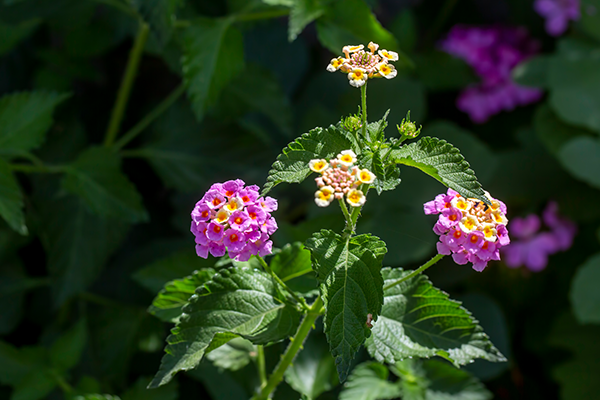
Lantana is toxic for dogs.
Dog Poisoning Treatment: Can a Dog Recover From Poisoning?
If you think your dog may be poisoned, take them to the vet or an animal poison control centre immediately. Do not attempt to treat them at home. If your dog has ingested a poison, the vet may induce vomiting and administer activated charcoal to absorb any remaining toxins.
he vet may also give your dog fluids and other supportive treatments depending on the poison. If the poison is topical, such as a pesticide, you may need to bathe your dog with a mild detergent.
To prevent dog poisoning, keep all potentially toxic substances out of your dog’s reach. Make sure to store them in a secure place and dispose of them properly. Be sure to avoid feeding your dog human food, as some of it can be toxic.
As previously discussed, familiarise yourself with poisonous plants and keep them away from your dog. If your dog spends a lot of time outside, be aware of any potential sources of poisoning in the environment, like pesticides or toxins.
Be sure to watch your dog on walks, especially on more rugged nature trails. There might be some stinging nettles or other toxic plants that your dog can quickly access if left to their own devices.
If you think your dog has been poisoned and you can’t get through to your vet, there are several hotline numbers for dog poisoning in Australia. The RSPCA provides a 24-hour hotline for animal emergencies, including suspected poisoning: 1300 ANIMAL (1300 264 625). Additionally, the Animal Poisons Information Hotline is available for general enquiries about pet poisoning: 1300 869 738.
As far as recoveries go, a dog can absolutely recover from poisoning. The time it takes to recover may depend on the type of poison, the amount ingested, and the timeliness of treatment. Immediate veterinary care is always necessary to treat poisoning in dogs. Treatment typically involves decontamination, administration of activated charcoal, and supportive care. With prompt and appropriate treatment, many dogs make a full recovery.
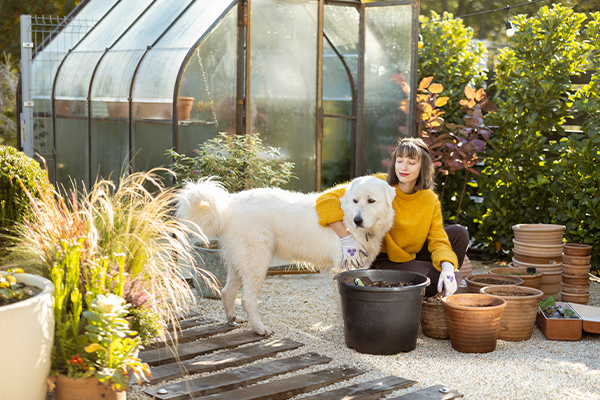
Safe Plants for Dogs
With all this talk of dangerous plants, you might be thinking, “what can I actually plant in my yard/garden that’s not a hazard for my dog?” Fear not! There are plenty of dog-safe yet attractive plants that you can feel free to grow in your garden and let your dog be around in general! These include many flowering varieties, herbs and grasses. Some completely dog-safe plants include:
- Lavender
- Rosemary
- Ivy
- Daisy
- Marigold
- Pansy
- Lily of the Valley
- Daylily
- Carnation
- Sunflower
- Native grasses such as kangaroo, wallaby and buffalo
- Tea tree
- Bottlebrush
- Grevilleas
- Correas
In conclusion, dog owners must be aware of the toxic plants commonly found in Australian gardens and yards. If your pup has been exposed to one or more of these plants, they may experience symptoms such as vomiting, diarrhea, seizures and even worse if not treated promptly by a vet. It’s also essential for pet parents to familiarise themselves with emergency helplines should their furry friends require urgent care due to poisoning.
Dog-safe plant options exist, so you’ll have an outdoor area that you and your dog can enjoy! With this knowledge, you can keep your pup safe from any potential harm caused by poisonous vegetation while still enjoying the beauty of nature together.
Latest Posts
Latest Posts
Dogs howl as a form of communication, expressing their emotions and intentions. Whether it's to seek attention, interact with fellow canines, or merely announce their presence, [�]
Nothing is better than frolicking outside with your dog on a summer day! It’s important to note that dogs can overheat very easily compared to humans, [�]
Questions? We’re here to help.
